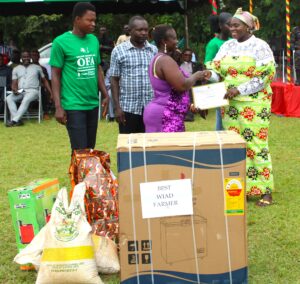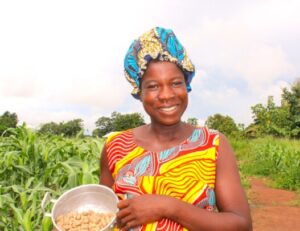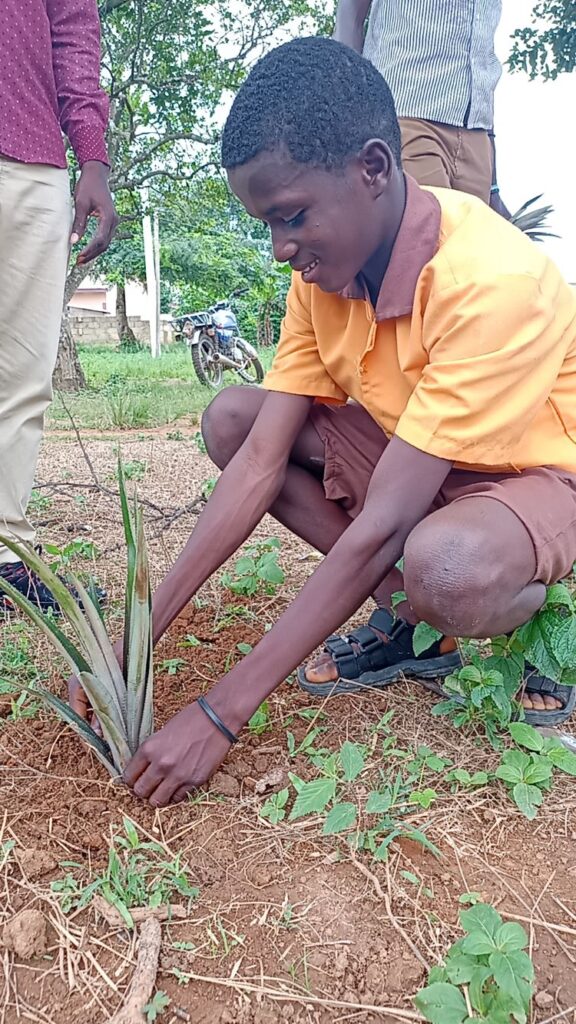Ensuring My Nutrition by Diversifying My Crops
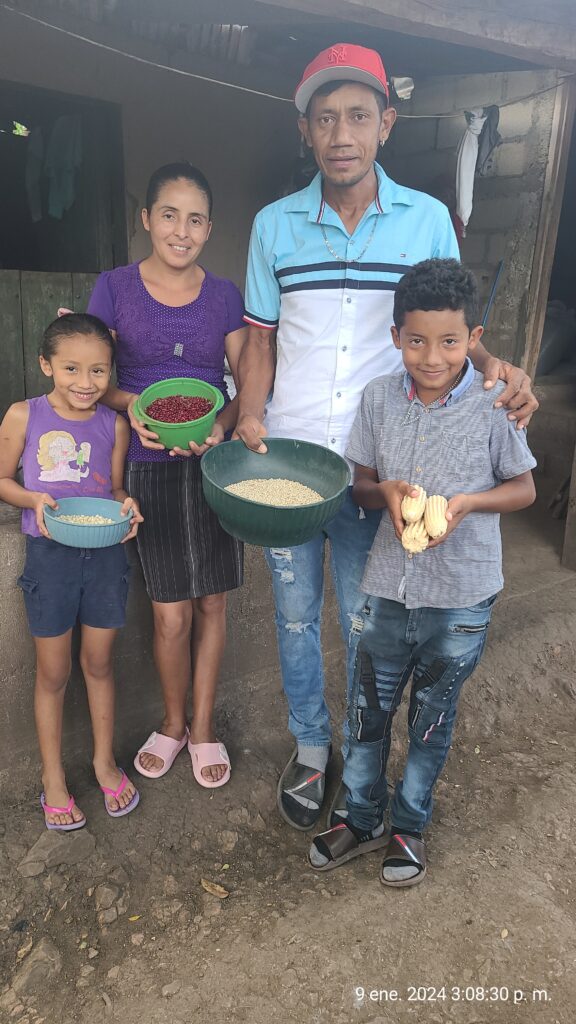
Beginning in 2023 Self-Help International (SHI) extended its agriculture program to the northern part of Nicaragua. Working in this area of the country is a challenge for the organization, since most of the people do not own their land, and those who do have very small plots. In addition, the weather conditions are extremely dry, to the point that even drinking water is limited at times. The ideal period for farmers use to plant corn, beans, wheat and vegetables is the rainy season, to be able to produce enough for their family consumption.
José is one of the many farmers working under these conditions. He is from the Algodonal community, located about 9 miles from the city of Condega in the province of Estelí. The community has an unpaved road, in good condition, allowing access for buses to a certain point in both winter and summer. On the rest of the road, about 2.5 miles, people walk or ride horses and motorcycles, as the road becomes narrower until reaching the community.
José told us that he has lived in Algodonal all his life. He is now 36 years old, married and with two beautiful children who are in the first and fifth grades of primary school. He hopes that his children will be able to complete their studies, something that he did not do when he had the opportunity. He relates: “I did not like to study, so I have dedicated myself to agriculture as a profession since I was very young. I also buy and fatten pigs, to market their meat here in the community. Thanks to God everything sells very quickly here.”
He continued, saying: “In the summer season the people in my community generally do not work the land due to lack of water. Rather, we emigrate to Costa Rica to work for 3 to 4 months. There we harvest sugar cane, cantaloupes and other vegetables. In this way I keep myself busy and at the same time generate income to support my family. In addition, I managed to save enough money to purchase the small plot of land (0.86 acres) which I currently farm. The property is not large, so to expand my planting area I work along with another person who has a larger piece of land, or I rent another plot. Sometimes it is difficult for me to supervise both pieces of land, because the land I rent is very far from my own. Even so, I make the effort, because I want to ensure the food for my family members. That is my highest priority.”
He continued sharing: “In this part of the country no one sells the corn they obtain from their harvest, because corn is our vital food and tortillas should not be missing from our table. So, in order to save enough food to cover our needs for the year, plus have some surplus to sell, it is necessary to farm more land or practice new techniques to increase our yields. For this reason, all the farmers of this community want to improve their situations. We have a good level of organization and communication.”
Self-Help International
“Thanks to this good communication, I became aware of the work that Self-Help International was doing in our community, through my cousin Nohelia, who is one of the community leaders. She told me that there was an opportunity to work in a new agriculture program. I attended the meeting where the technician explained to us how SHI’s agriculture program works. We were all surprised when he told us about planting corn in a double-row pattern and planting one grain very close to the other. Nevertheless, the whole group said, let’s try this new technique and see what happens. Later we had workshops about the costs to produce corn and beans with the new technique. The last step was learning how to implement the double-row planting. We all thought that it was going to be a loss and we wouldn’t be able to harvest anything. Even so, we took the risk because inside us what we wanted was to obtain better yields. To keep the process going, the program provided us with loans to buy the seed and the other inputs. SHI also provided us with assistance when the program technician visited us.”
“I was surprised by the results I obtained. My experience with the management of the INTA Nutrader corn and the double-row technique was quite good. Now I like that planting method because in this way I can use less land. I planted just my own piece of land (0.43 acres) and didn´t rent any other land, and still harvested more than I did in previous years using native corn and the traditional way of planting. This double-row method also makes it easier to manage the corn crop. The only negative thing I saw was the time it takes to plant, because it requires a lot of care to maintain the distance in between the lines, and the use of ropes slows things down a bit, but once people get used to it, it is easier to perform this task.“
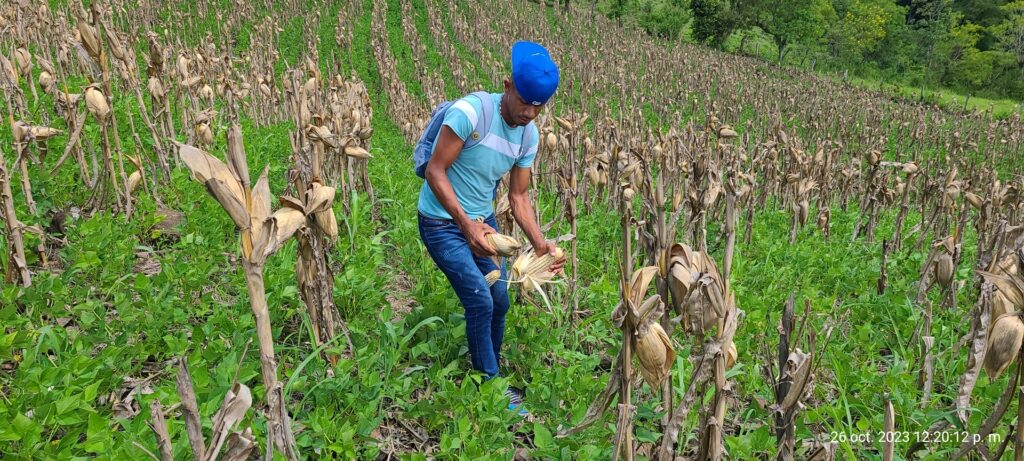
“A lot of fungus was present in the corn. This disease occurs a lot in this community, I had to cut off the affected parts. I couldn’t control the disease immediately because it was quite late by the time I discovered it. The SHI technician told me what products to use, to avoid contamination of the corn. I had no problems with the other pests since with the help of the technician we controlled them. There was also the inconvenience that the neighbor’s cattle broke the fence and ate part of the corn. Despite all these problems, the yield of the corn was great. I managed to harvest 1,200 pounds of corn. I am satisfied with the result, though without the problems I would have harvested between 1,600 and 2,000 pounds. I am still surprised and satisfied, because I harvested enough to feed my family as well as our animals.”
“My wife likes the INTA-Nutrader variety of corn, because it is very heavy, easy to cook, and the tortillas are white. We do not sell the corn, it is always left for self-consumption. Currently I maintain both the old variety that we always planted and this new variety of corn, INTA-Nutrader, that we really like. We will continue using it and promoting it to other families. Another thing about this corn is that even though it was harvested late, there were very few ears that dropped, and it resisted the dry weather. I consider that with the double-row technique, good agronomic management and enough water, the results will be even greater. We must pay attention to the planting dates and the amount of fertilizer, because a lot of factors are against us, like the climate.”
Biofortified Beans
“Through the agriculture program promoted by Self-Help International I also had the opportunity to receive INTA Bioapante biofortified bean seeds. SHI gave us 10 pounds of beans under the revolving method, which means that each farmer receives 10 pounds of beans with the idea of forming a seed bank. In the end we return 20 pounds to the program for them to be able to donate seed to more farmers. The variety is known and used throughout the region. This variety is good, judging from the 10 pounds that they gave me. I harvested 400 pounds of beans. I was able to give back the 20 pounds to the program and give seed to other farmers. I also used the rest of the beans as seed to plant 1.73 acres in the off season, when the rainfall is less. I harvested 3,200 pounds of beans, a great blessing. This production allowed me to keep 400 pounds for home consumption. I sold the rest to repay the loan that the organization gave me for the corn.”
“As I mentioned before, the corn I harvest is not sold, because we use it for our own consumption. Corn is our life. We generally eat from 2 to 4 tortillas per person at each meal. This year we have made sure to have enough corn without having to buy from other sources, thanks to the support of all of you.”
“In the dry season the program also provided 7 pounds of sorghum seed to each farmer. From that amount I was able to plant 4 pounds, and the other 3 pounds I gave to my dad, because I don´t have enough land to use that amount of seed. But, from those 4 pounds I harvested 1,400 pounds of sorghum. It was another blessing for me and my family, because, as with the corn, this sorghum was saved for our own consumption.”
“With what I harvested, I was able to meet the needs of my family and our animals, including 21 chickens, 3 fattening pigs, and 2 calves, which is why we are deeply grateful to the people of SHI for the support they have given us (donations of corn, bean, and sorghum seeds, technical assistance, and credit). We have managed to diversify our crops, improve our yields, and modernize production, even though it is on a small piece of land.”
“I also bought a power backpack sprayer and hired fumigation services to other farmers in this community and other neighboring communities. In this way I generated income to complement what agriculture gives me.”
“Another important point to mention is the ease that the program provides with respect to the loans, because they do not ask for any type of guarantee. In addition, they charge a low interest rate, something that we never see in our region. Furthermore, they don’t expect us to pay until the harvest is finished, so we do not have to get money from other sources to be able to pay the debt.”
“We hope to continue working and involving other families in the community who need your support and are interested in improving their living conditions. We give a huge thanks to everyone who makes it possible for this help to reach families in this community and others.”

